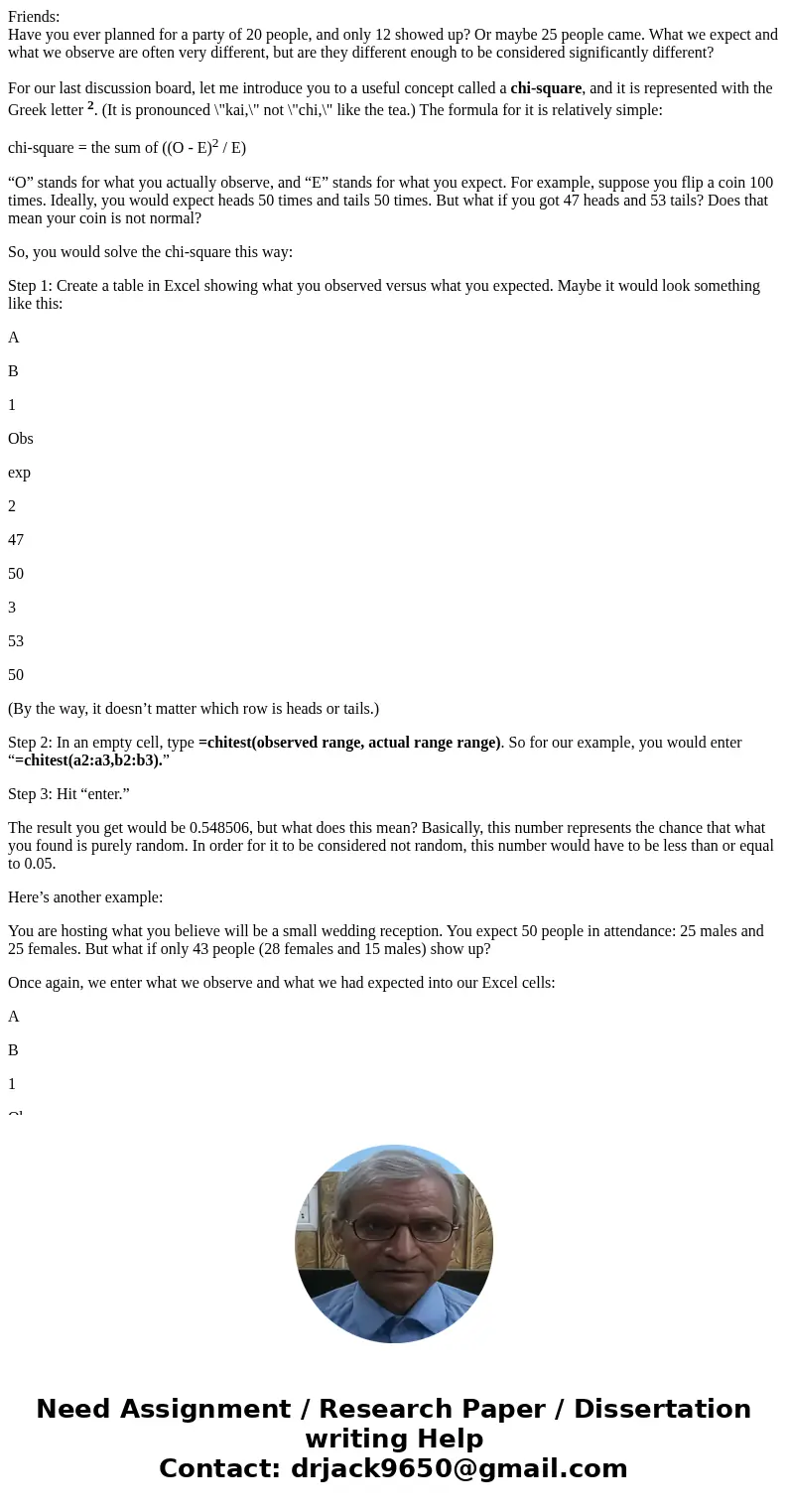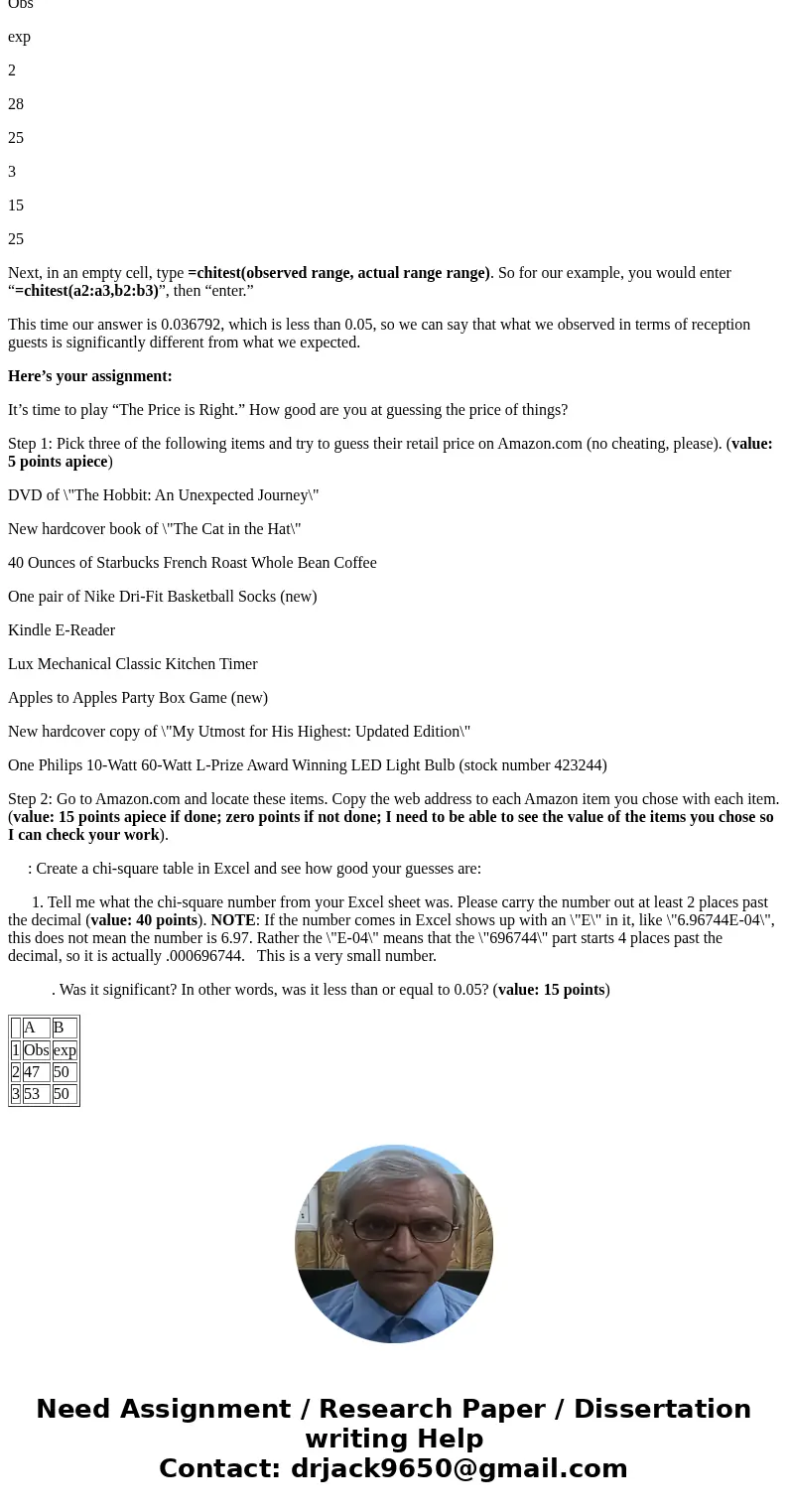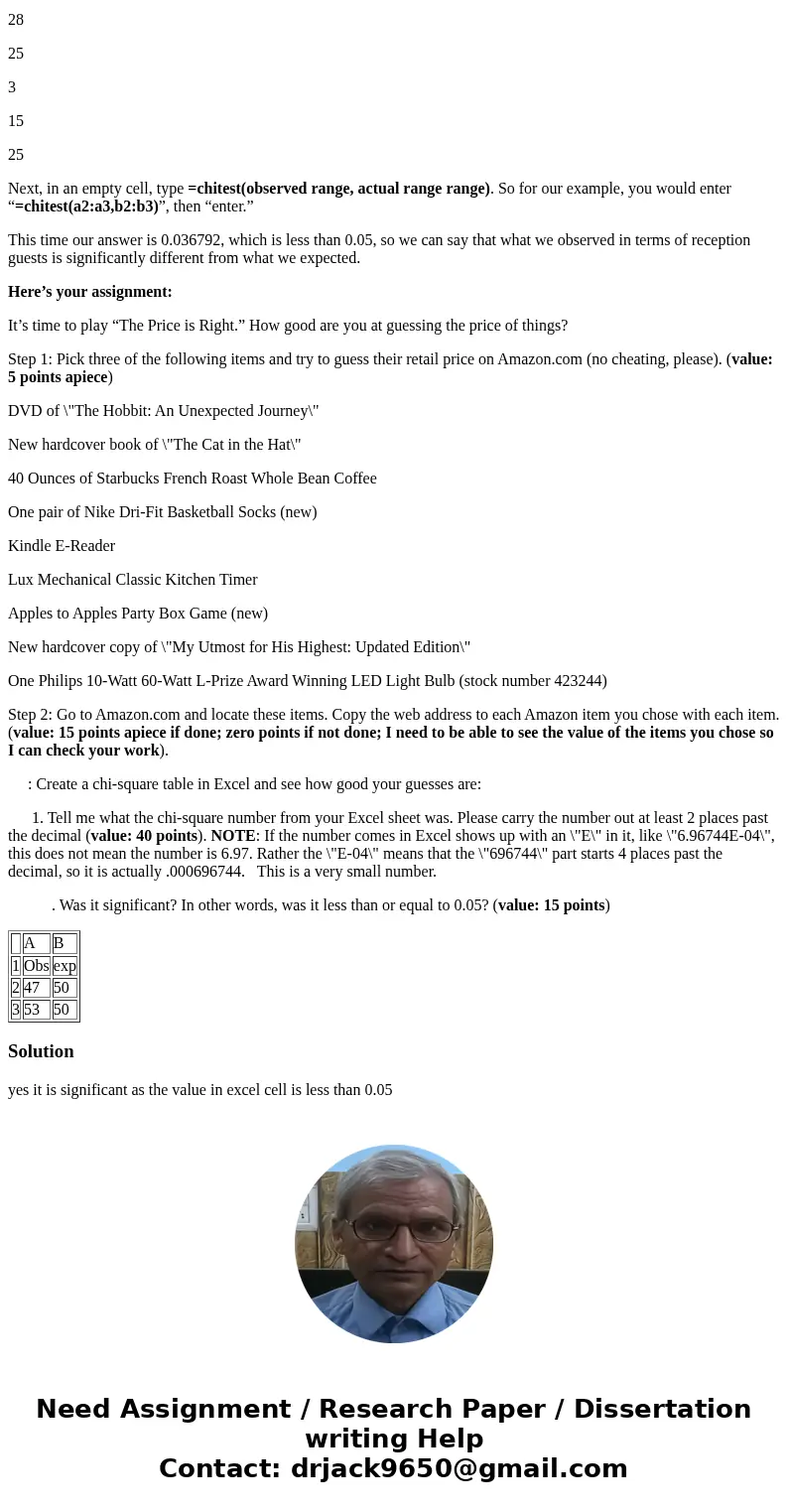Friends Have you ever planned for a party of 20 people and o
Friends:
Have you ever planned for a party of 20 people, and only 12 showed up? Or maybe 25 people came. What we expect and what we observe are often very different, but are they different enough to be considered significantly different?
For our last discussion board, let me introduce you to a useful concept called a chi-square, and it is represented with the Greek letter 2. (It is pronounced \"kai,\" not \"chi,\" like the tea.) The formula for it is relatively simple:
chi-square = the sum of ((O - E)2 / E)
“O” stands for what you actually observe, and “E” stands for what you expect. For example, suppose you flip a coin 100 times. Ideally, you would expect heads 50 times and tails 50 times. But what if you got 47 heads and 53 tails? Does that mean your coin is not normal?
So, you would solve the chi-square this way:
Step 1: Create a table in Excel showing what you observed versus what you expected. Maybe it would look something like this:
A
B
1
Obs
exp
2
47
50
3
53
50
(By the way, it doesn’t matter which row is heads or tails.)
Step 2: In an empty cell, type =chitest(observed range, actual range range). So for our example, you would enter “=chitest(a2:a3,b2:b3).”
Step 3: Hit “enter.”
The result you get would be 0.548506, but what does this mean? Basically, this number represents the chance that what you found is purely random. In order for it to be considered not random, this number would have to be less than or equal to 0.05.
Here’s another example:
You are hosting what you believe will be a small wedding reception. You expect 50 people in attendance: 25 males and 25 females. But what if only 43 people (28 females and 15 males) show up?
Once again, we enter what we observe and what we had expected into our Excel cells:
A
B
1
Obs
exp
2
28
25
3
15
25
Next, in an empty cell, type =chitest(observed range, actual range range). So for our example, you would enter “=chitest(a2:a3,b2:b3)”, then “enter.”
This time our answer is 0.036792, which is less than 0.05, so we can say that what we observed in terms of reception guests is significantly different from what we expected.
Here’s your assignment:
It’s time to play “The Price is Right.” How good are you at guessing the price of things?
Step 1: Pick three of the following items and try to guess their retail price on Amazon.com (no cheating, please). (value: 5 points apiece)
DVD of \"The Hobbit: An Unexpected Journey\"
New hardcover book of \"The Cat in the Hat\"
40 Ounces of Starbucks French Roast Whole Bean Coffee
One pair of Nike Dri-Fit Basketball Socks (new)
Kindle E-Reader
Lux Mechanical Classic Kitchen Timer
Apples to Apples Party Box Game (new)
New hardcover copy of \"My Utmost for His Highest: Updated Edition\"
One Philips 10-Watt 60-Watt L-Prize Award Winning LED Light Bulb (stock number 423244)
Step 2: Go to Amazon.com and locate these items. Copy the web address to each Amazon item you chose with each item. (value: 15 points apiece if done; zero points if not done; I need to be able to see the value of the items you chose so I can check your work).
: Create a chi-square table in Excel and see how good your guesses are:
1. Tell me what the chi-square number from your Excel sheet was. Please carry the number out at least 2 places past the decimal (value: 40 points). NOTE: If the number comes in Excel shows up with an \"E\" in it, like \"6.96744E-04\", this does not mean the number is 6.97. Rather the \"E-04\" means that the \"696744\" part starts 4 places past the decimal, so it is actually .000696744. This is a very small number.
. Was it significant? In other words, was it less than or equal to 0.05? (value: 15 points)
| A | B | |
| 1 | Obs | exp |
| 2 | 47 | 50 |
| 3 | 53 | 50 |
Solution
yes it is significant as the value in excel cell is less than 0.05



 Homework Sourse
Homework Sourse